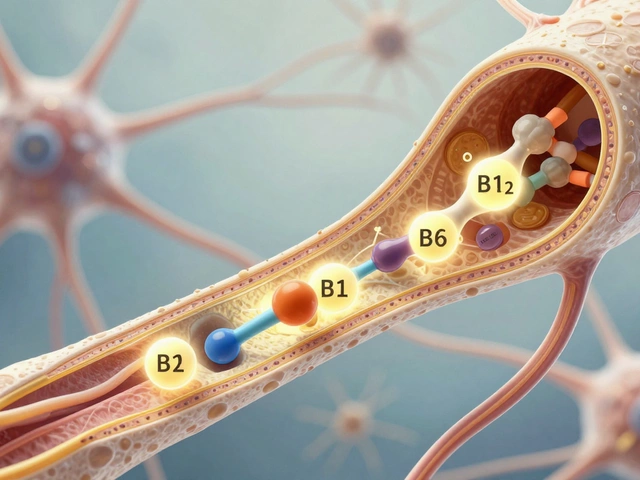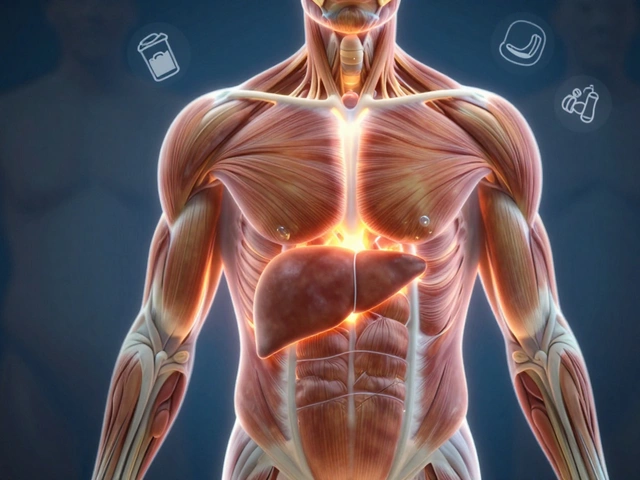It’s one thing to hear the word “arthritis,” but it’s another when you wake up and your knees just won’t bend right. That nagging, sore feeling? For millions, it’s a daily reality. You might wonder if there’s a magic pill that wipes out joint pain. Here’s the thing: no single painkiller fits everyone. But some really do stand out.
Doctors usually suggest starting with simple stuff like paracetamol (acetaminophen) or ibuprofen. These over-the-counter pills can soak up mild to moderate pain and swelling. But, and it’s a big but—if you go over the recommended dose, you risk liver or stomach problems. Always read the label, don’t double up because today hurts more than yesterday.
If you need stronger relief, there are options, but they come with extra baggage like side effects and the possibility of needing a prescription. It can feel like a maze: which pill, how much, for how long? Don’t guess. Even a small change in your meds can make a big difference—for better or worse.
- Understanding Arthritis Pain
- Comparison of Common Painkillers
- When to Choose Prescription Medications
- Alternative and Non-Drug Pain Relief
- Tips for Safe and Effective Pain Management
Understanding Arthritis Pain
Most people think arthritis is just stiff joints, but the pain is actually way more complicated. You get a mix of swelling, heat, tenderness, and that classic ache that just won’t let up. So, why does arthritis hurt so much? At its core, it’s about inflammation—your body’s immune system firing up and attacking its own tissues. In some types, like osteoarthritis, it’s more about the wear and tear breaking down cartilage. With rheumatoid arthritis, the immune system goes after your joints, making them swell and ache.
Arthritis pain isn’t just in the joints. It can also show up as fatigue, muscle aches, or even trouble sleeping. And weirdly enough, the pain level doesn’t always match how the joint looks on an X-ray—one person might barely notice it, while someone else is almost knocked out by it. Here’s what’s actually happening inside your body:
- The cartilage gets worn down or inflamed, reducing cushioning between bones.
- Swelling in the joint capsule increases pressure and pain.
- Nerves around the joint get irritated and send pain signals to your brain.
Arthritis isn’t rare. According to the CDC, roughly 1 in 4 adults in the U.S. have some form of arthritis—that’s about 58.5 million people as of 2024. The number keeps climbing. Even people in their 30s and 40s can get it, not just older adults.
| Arthritis Type | Common Symptoms | Who Mostly Gets It |
|---|---|---|
| Osteoarthritis | Joint pain, stiffness, crunching sounds | Older adults, injury history |
| Rheumatoid Arthritis | Swollen joints, morning stiffness, fatigue | Mainly women, ages 30-60 |
| Psoriatic Arthritis | Joint swelling, skin rash, nail changes | People with psoriasis (skin condition) |
How you feel pain, and how bad it gets, can depend on things like your weight, stress levels, genetics, and even the weather. Understanding arthritis painkiller options starts with knowing what kind of pain you’re actually dealing with. This little bit of info can help your doctor zero in on the best pain relief plan for you, instead of just grabbing the first pill on the shelf.
Comparison of Common Painkillers
Walking down the pharmacy aisle, you’ll spot dozens of pills promising joint relief. Truth is, only a handful are proven to work for arthritis pain. Here’s how the top players stack up.
Arthritis painkiller choices come in two main types: non-prescription and prescription. The non-prescription group covers stuff like paracetamol (acetaminophen), ibuprofen, and naproxen. For the stronger stuff, you need a doctor’s note.
- Paracetamol (Acetaminophen): Easiest to grab at a store, usually safe if you stick to the dose. It helps with mild pain but doesn’t lower swelling in joints.
- NSAIDs (Non-Steroidal Anti-Inflammatory Drugs): Think ibuprofen (Advil), naproxen (Aleve), and diclofenac. These not only cut down pain but help with joint swelling. Used right, they give fast relief, but can upset your gut or raise blood pressure if you overdo it.
- COX-2 Inhibitors: These are prescription-only, like celecoxib. They’re gentle on the stomach but may still cause heart issues for some people.
- Opioids: Codeine, tramadol, or morphine fall here. Doctors save these for stubborn pain that just won’t quit, mostly because they’re addictive and bring side effects like sleepiness and constipation.
- Topical Painkillers: Gels or creams with diclofenac or capsaicin let you target sore spots without risking your stomach or kidneys.
Ever wondered which painkiller most people reach for? Data from the US CDC in 2023 showed ibuprofen tops the chart for daily joint pain relief, but it’s also the most likely to cause stomach side effects in long-term users.
| Painkiller | Works Fast? | Reduces Swelling? | Possible Side Effects |
|---|---|---|---|
| Paracetamol | Yes | No | Liver damage (rare, with high doses) |
| Ibuprofen/Naproxen | Yes | Yes | Stomach upset, ulcers |
| COX-2 Inhibitors | Yes | Yes | Heart risk |
| Opioids | Yes | No | Addiction, drowsiness, constipation |
| Topical NSAIDs | Slower | Yes (on applied area) | Skin irritation |
No painkiller is perfect, and what works for your neighbor might not work for you. For many, mixing up a pill with a cream or switching between types (with your doctor’s okay) can help keep pain controlled and side effects in check.

When to Choose Prescription Medications
Sometimes, popping ibuprofen just won’t cut it. If your arthritis pain sticks around even after trying the simple stuff, it might be time to think about prescription meds. The main clue? When joint pain messes with your sleep, stops you from working, or doing basics like tying your shoes or walking the dog.
Doctors usually consider stronger drugs if:
- You’ve maxed out on over-the-counter options (like acetaminophen or NSAIDs) and still can’t move without wincing.
- Swelling and stiffness don’t ease up, even after rest and ice packs.
- Pain wakes you up at night or keeps you from normal chores.
- Your doctor notices joint damage or swelling that threatens long-term mobility.
Most prescription options fall into a few big groups:
- NSAIDs (Non-Steroidal Anti-Inflammatory Drugs) – These are the heavier hitters like celecoxib (Celebrex) and diclofenac. They’re stronger than over-the-counter ibuprofen, but you’ll need close monitoring for stomach, kidney, or heart side effects.
- Opioids – Meds like tramadol might be on the table for really severe pain, but doctors are much more careful with these now because of the addiction risk. They’re usually only for short-term use.
- Disease-Modifying Anti-Rheumatic Drugs (DMARDs) – These, like methotrexate, aren’t just painkillers. They slow the disease itself, which helps in types like rheumatoid arthritis more than osteoarthritis.
- Biologics – These go after the body’s immune response. Stuff like adalimumab (Humira) and etanercept (Enbrel) changed the game for folks with stubborn inflammatory arthritis, but watch for infection risk and higher cost.
Here’s a quick look at how these meds stack up:
| Prescription Group | Typical Use | Main Side Effects |
|---|---|---|
| NSAIDs (e.g., celecoxib) | Moderate-severe pain, inflammation | Stomach upset, high blood pressure, kidney strain |
| Opioids (e.g., tramadol) | Severe, short-term pain | Drowsiness, constipation, dependence |
| DMARDs (e.g., methotrexate) | Slowing joint damage in inflammatory arthritis | Liver risk, infections, mouth sores |
| Biologics (e.g., adalimumab) | When DMARDs are not enough | Infections, injection site reactions |
Talk to your doctor before starting anything new. Bring a list of what you’ve already tried, all your other meds, and be honest about what hurts and when. Good communication leads to safer, more effective treatment—and less guesswork when figuring out the arthritis painkiller that fits your life.
Alternative and Non-Drug Pain Relief
Pills aren’t the only way to calm arthritis pain. In fact, skipping meds every now and then and trying other approaches might even bring longer-lasting comfort. Most orthopedic doctors today recommend mixing arthritis painkiller options with lifestyle changes that target pain at the source.
Physical therapy stands out for a reason. A therapist can show you moves that build strength around the sore joint, help you walk easier, and take the load off tired knees or hips. If you’ve never tried PT, you’re missing out—it’s not just stretching, but also learning ways to stand, sit, or move that don’t cause pain.
Heat and cold therapy are go-to tricks for many people. A warm towel or heating pad eases stiff joints, while a cold pack reduces swelling. Keep it simple: 15–20 minutes at a time. Some folks swear by alternating heat and cold, especially after a long day.
Regular, gentle exercise actually helps pain—not just for your joints, but your mindset, too. Walking, cycling, or swimming in a heated pool are top picks. But don’t force it. If your joint swells up, take a break and talk to your doctor.
Don’t forget about weight management. Extra kilos add pressure on your joints. Studies show even dropping five percent of your body weight can have a real impact on pain and how well you move.
- Tip: Look into mindfulness or guided relaxation. Techniques like meditation or deep breathing might not fix the joint problem, but plenty of people say it takes the edge off pain and helps them sleep better.
- Special arthritis gloves or braces can stabilize and support your joints during daily tasks. They’re not magic, but they can make cooking or typing a little easier.
- Massage therapy—when done by someone who understands arthritis—may reduce stiffness and boost blood flow. Just don’t go for deep, painful massages; gentle is usually best.
- Some folks see good results with acupuncture, an ancient Chinese technique using tiny needles. The pain relief often lasts for days or even weeks.
Alternative methods require some trial and error. What works well for one person may do nothing for someone else. Keep your doctor in the loop about what you try, and don’t skip out on proven painkillers or medical care unless your doctor’s on board.

Tips for Safe and Effective Pain Management
Managing arthritis pain isn’t a one-and-done deal. It’s a daily thing, and getting it right means playing it safe but smart. Most mistakes happen when people either take too much medicine or try to tough it out and take too little—both can backfire. So what really works in practice?
- Stick to the recommended dose: Don’t assume more equals better pain relief. For example, going over 3,000 mg of acetaminophen per day can damage your liver.
- Rotate your painkillers if needed, but always check with your doctor so medicines don’t clash or pile up the risk of side effects.
- Try adding gentle movement: walking, stretching, or swimming keeps your joints working and actually reduces pain for most arthritis patients.
- Track your pain in a notebook or app. When you write down when the pain hits and what you took, your doctor can see patterns fast.
- Be careful with supplements and herbal products. Some can mess with your medicines or aren’t proven to help.
The American College of Rheumatology recommends combining medicine with physical activity and weight management for the best results. According to Dr. Kavita Singh, a top orthopedic doctor in Delhi, "No painkiller works as well as a mix of medication, movement, and rest tailored to the patient. It’s never just about the pills."
"When patients follow a balanced routine that includes the right medication, a healthy diet, and regular exercise, their long-term outcomes are much better" – Dr. Kavita Singh, orthopedic specialist.
Don’t ignore side effects. If you notice anything weird—stomach pain, swelling, rashes—call your doctor. Those little things can get serious fast.
Check out real stats from a major 2023 survey on arthritis management below:
| Method | Reported Improvement (%) |
|---|---|
| Physical Activity + Painkillers | 78 |
| Painkillers Only | 55 |
| Physical Activity Only | 62 |
| No Action | 15 |
The bottom line? Using a arthritis painkiller makes sense, but pair it with good habits and regular check-ins with your doc. That’s how you beat joint pain, not just manage it.










